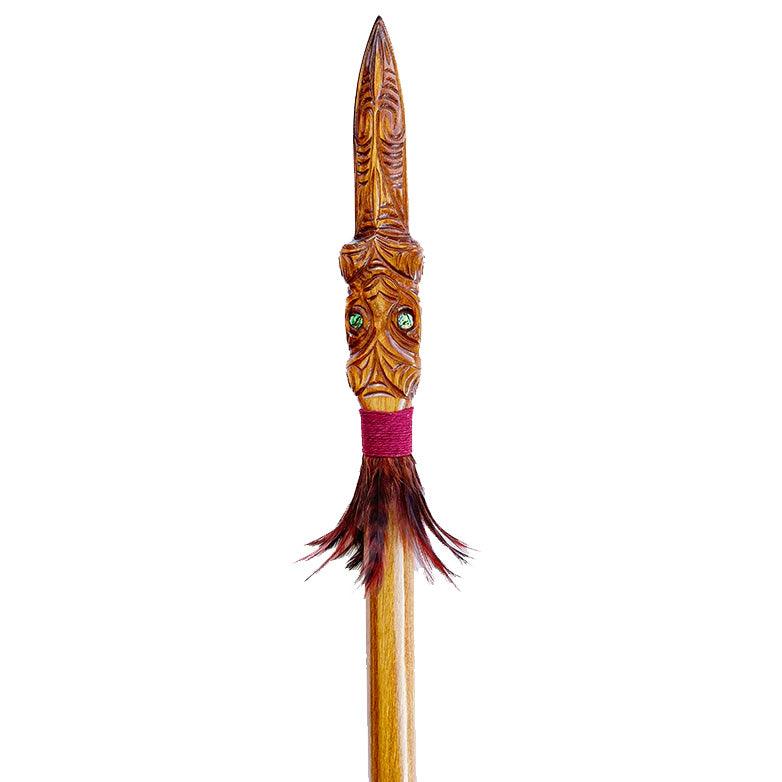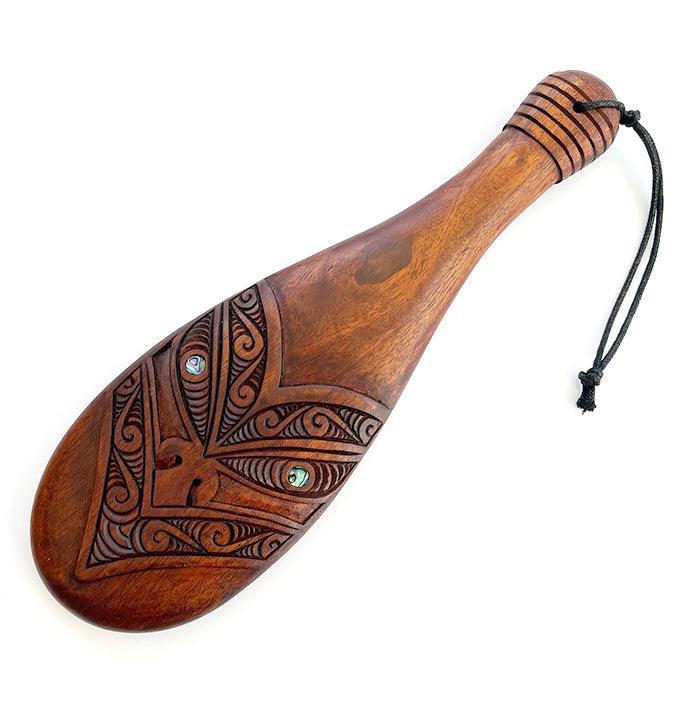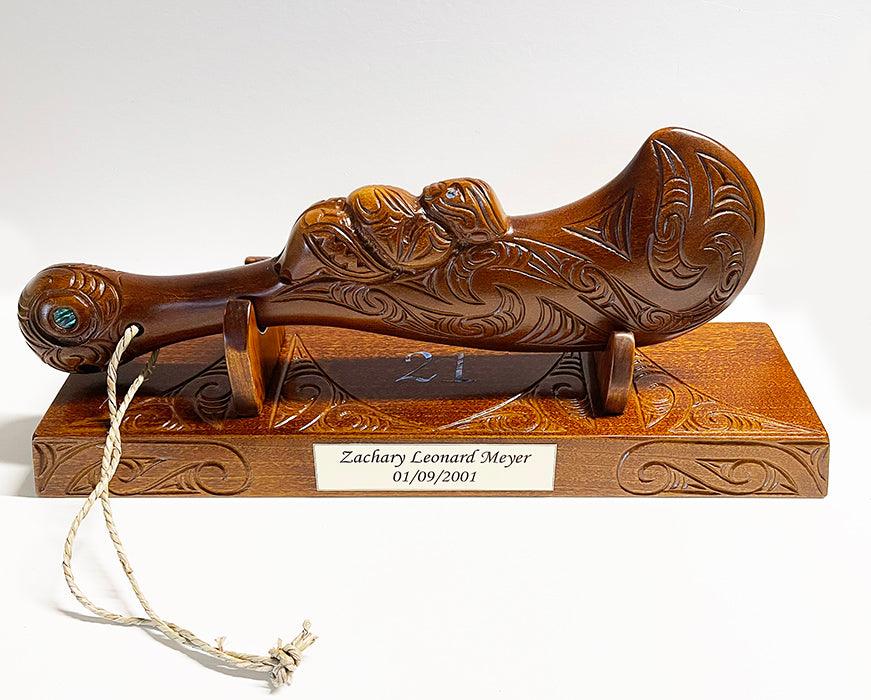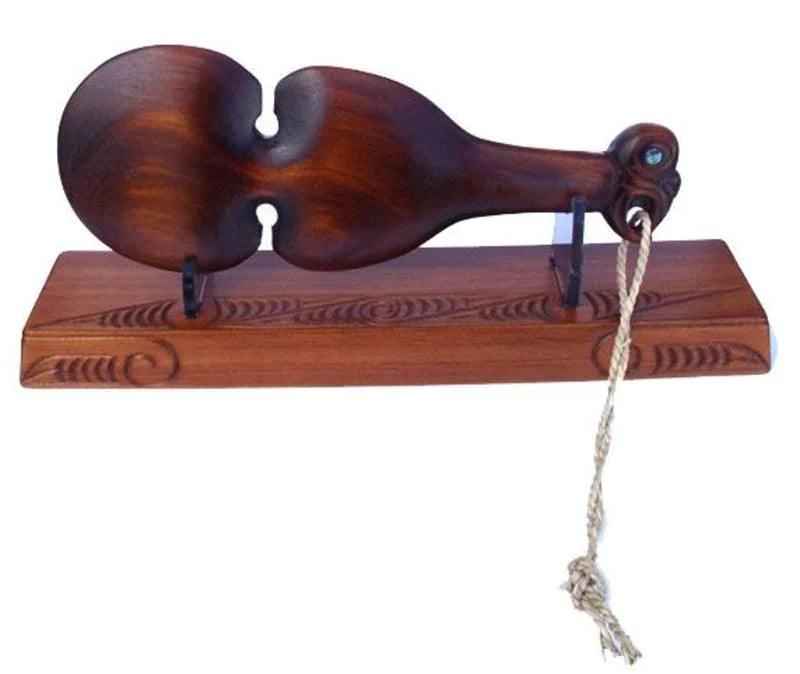Maori Culture Maori Culture » maori weapon
-
Taiaha Taiaha
The Taiaha (pronounced Tie-uh-ha) is a Maori weapon used in close hand-to-hand combat. Usually made from a hardwood, the taiaha was used to strike and to stab, but mostly to strike with the rau, the blade. Parts of the taiaha are: Upoko: the head of the taiaha, including a carved head with paua shell eyes, and an arero, a tongue. Below the upoko are...The Taiaha (pronounced Tie-uh-ha) is a Maori weapon used in close hand-to-hand combat. Usually made from a hardwood, the taiaha was used to strike and to stab, but mostly to strike with the rau, the blade. Parts of the taiaha are: Upoko: the head of the taiaha, including a carved head with paua shell eyes, and an arero, a tongue. Below the upoko are... -
Patu Patu
Patu is the Maori name for a club or pounder. It was a common weapon used in hand-to-hand combat by Maori in inter-tribal wars or conflicts. Patu were made from wood, whalebone, stone, or greenstone. If made from greenstone, it was usually called a mere, or mere pounamu. If made from stone, it was a patu onewa; if made from whalebone it was called a patu paraoa; if...Patu is the Maori name for a club or pounder. It was a common weapon used in hand-to-hand combat by Maori in inter-tribal wars or conflicts. Patu were made from wood, whalebone, stone, or greenstone. If made from greenstone, it was usually called a mere, or mere pounamu. If made from stone, it was a patu onewa; if made from whalebone it was called a patu paraoa; if... -
Wahaika Wahaika
The Maori Wahaika (pronounced wa-ha-eeka) is a pre-European club used in close combat. The word translates to "mouth of the fish", which relates to the notch on one side of the club. Wahaika were made from either whalebone or wood. They usually had a concave back, with the notch in the middle, the butt carved in the form of a head (usually with a paua...The Maori Wahaika (pronounced wa-ha-eeka) is a pre-European club used in close combat. The word translates to "mouth of the fish", which relates to the notch on one side of the club. Wahaika were made from either whalebone or wood. They usually had a concave back, with the notch in the middle, the butt carved in the form of a head (usually with a paua... -
Kotiate Kotiate
The Kotiate (pronounced courtee-ah-teh) was a pre-European Maori weapon (club) used in close combat. Of particular note are the carved notches on each side of the flat blade. The notches were used in a ripping motion, possibly to rip an opponent's weapon out of their hands. Another theory comes from the meaning of the word kotiate, which translates to "cut the liver in half". ...The Kotiate (pronounced courtee-ah-teh) was a pre-European Maori weapon (club) used in close combat. Of particular note are the carved notches on each side of the flat blade. The notches were used in a ripping motion, possibly to rip an opponent's weapon out of their hands. Another theory comes from the meaning of the word kotiate, which translates to "cut the liver in half". ... -
Mere Pounamu Mere Pounamu
Mere pounamu, usually just called a mere, are the most highly prized Maori weapon. A form of patu, or club, the mere is prized for its weight, beauty and strength. Made from pounamu (greenstone), the weapon could take years to make, as the club had to hewn from boulders, which took a long time to break down and then carve with basic implements. ...Mere pounamu, usually just called a mere, are the most highly prized Maori weapon. A form of patu, or club, the mere is prized for its weight, beauty and strength. Made from pounamu (greenstone), the weapon could take years to make, as the club had to hewn from boulders, which took a long time to break down and then carve with basic implements. ...











